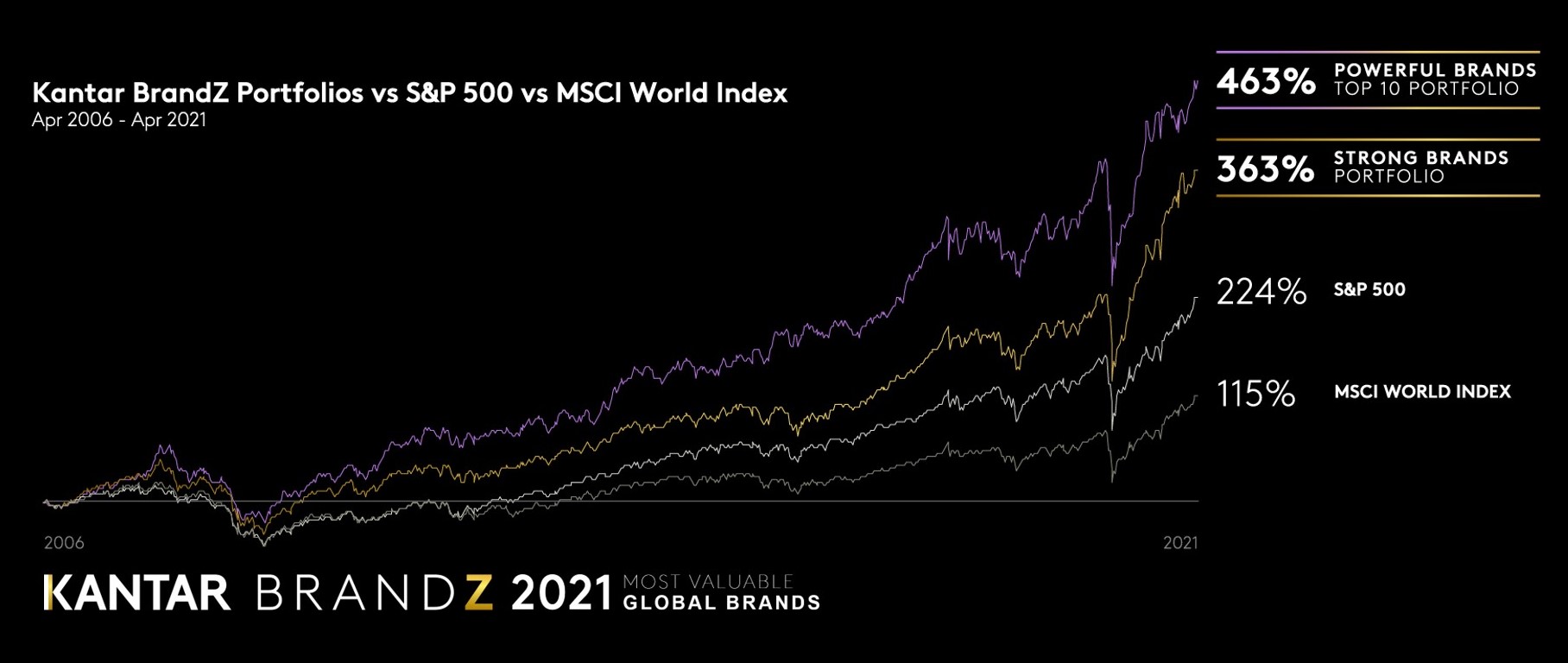What were the key takeaways from this year's Kantar BrandZ Most Valuable Global Brands study?
Over $2 trillion in brand value was added year on year – that’s a 42% rise and clearly indicates that strong brands still deliver great returns for businesses. We're also seeing the rise of new challenger brands. These brands leveraged different factors like opportunities created by shortages/shipping delays which opened up consumers' consideration sets; the willingness to try new brands since other forms of novelty were scarce. However, established brands have also risen to the challenge and have done very well. Overall this creates more dynamism in the market and more choice for consumers.
Consumers worldwide have become increasingly interested in products with local provenance. “Buying local” is seen to support your own community, furthermore “local” brands are associated with desirable traits like quality and authenticity. Chinese brands continue to show that they are still a force to recon with as they added +131% in value and doubled in brand power. Maintaining brand exposure by continuing to communicate through the pandemic helped brands grow salience. The focus on home life has created new needs around managing stress, navigating “me time” and redefining convenience. Many of these needs are here to stay and brands which are navigating them well, now and in the future will stand to gain.
We saw new demands on corporate responsibility in the wake of Black Lives Matter protests. High growth brands have a stronger reputation for sustainability and purpose. Through the study, we discovered that meaningful difference continues to deliver strong returns. Brands need to stay meaningful by continuing to ask themselves – are you connecting with your consumers emotionally and also delivering on their needs?. And also drive difference by ensuring your brand feels different to rest of the brands in the category and by being a trend setter.
Boost your brands mental and physical availability to ensure consumers can ‘find’ you. It's important to always be on the lookout for the “salience gap” – a discrepancy between how well the brand is known and how meaningfully different it is perceived to be. There are many cases where brands that ignored the gap and continued to let it widen have fallen by the wayside – a classic example being Nokia.
[The consumer experience is more crucial than ever.] Get the experience right – these days brands are as much defined by their logistics as by their products. On-demand, omnichannel commerce has fully arrived, and with it comes a new set of consumer expectations which brands need to be mindful of.
One thing that we noticed in the data was that it's important for brands to continue to disrupt the system.This year’s BrandZ data clearly shows that faster growing brands are perceived as much more disruptive than the rest. It’s a great way of ensuring brands remain meaningfully different.
Another way for brands to be meaningfully different is to inspire strong perceptions around brand purpose. This years' BrandZ data again clearly shows that faster growing brands are perceived to be much more socially and environmentally responsible than the rest. Brands with a strong sense of purpose are perceived as ‘making peoples lives better’ and inspire feelings of ‘pride’ and ‘connection’ in consumers.
Based on the insights from the study, what can you tell about how brands have adapted their strategies/values in the post-pandemic world?
Brands that have been disruptive, kept a pulse on consumers’ evolving needs and addressed those needs, have ensured they have remained meaningfully different. By continuing to amplify that meaningful difference, they have ensured consumers to choose them above others even in difficult times.
But let me also give some specific examples here:
- American fast-food chain Chipotle, married a smartly updated, high-tech ordering app, with a very old-school convenience concept – drive-through – to create its category-leading “Chipotlanes” concept. These rolled out nationwide just in time to satisfy consumer demand for more “low-touch” pickup options during the COVID-19 pandemic.
- TikTok’s path to becoming this year’s second-biggest riser is also based on human insight. Social media isn’t new, of course, and neither are short-form videos. But TikTok’s algorithm is a genuine breakthrough, for the way it embraces surprise, chance and discovery. This emphasis on exploration – rather than the same old predictable grids – proved a perfect match for a year when many were stuck at home and looking for something new.
- This was also a strong year for many brands in the apparel category, with labels like Nike, Puma, and Lululemon taking advantage of consumer demand for more active, wellness-centered products. Of the world’s major global fashion brands, Uniqlo was best positioned for the shift toward stay-at-home living – with its technical innovations like Heattech and Airism helping the brand to straddle the line between athleisure and loungewear.
Apart from McDonalds, the remaining top 10 valuable brands are all in the tech space. What can we interpret from this?
This has been a big trend over the last decade where we have seen that tech brands have increasingly been featured in the top 10. A large factor in success of these brands has been the ‘ecosystem’ approach they have taken to building their brand. They have transformed from category specific focus into an ecosystem of services, which help people sustain and enrich their daily lives, thus forming strong emotional connection with consumers.
How have you utilised the stock market value of brands in your research?
Technically we don’t use stock market performance, as we value the brand and not the company (eg the value of Dove and not Unilever). To get to the brand value, we combine financial and market data with primary research data from consumers on their views about brands. This reveals the power of the brand in the mind of the consumer and creates predisposition to buy, and most importantly, validates a positive correlation with better sales performance.
But, having said that our analysis of brands clearly shows that BrandZ Top 100 has consistently delivered stronger stock market returns as compared to S&P500 and other indices. And in fact strong brands also tend to bounce back much faster from downturns, as was seen even during this pandemic.

BrandZ helps marketers and businesses understand the long term value they are creating based on all their marketing efforts. We do see a very strong relationship between this value that brands create and stock market performance of brands. While there can be short term phenomenon as you mention above which can bring down the value of a stock, inherently even stock market reward brands/companies that show strong potential to generate economic value now and in the future. And that is only possible when the companies have strong business models, and assets (brands being one of them). And hence we do see good relationship between the two.






